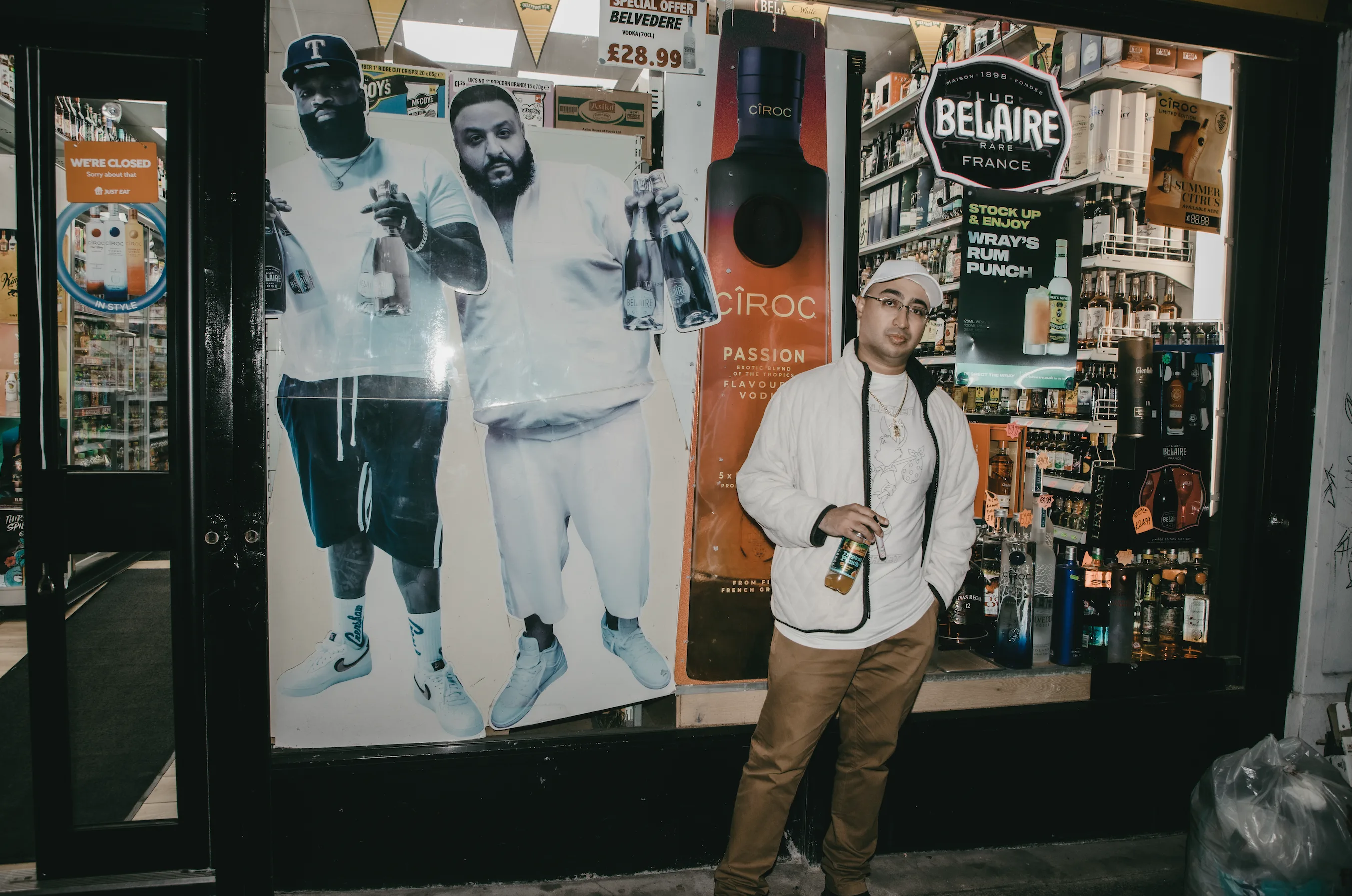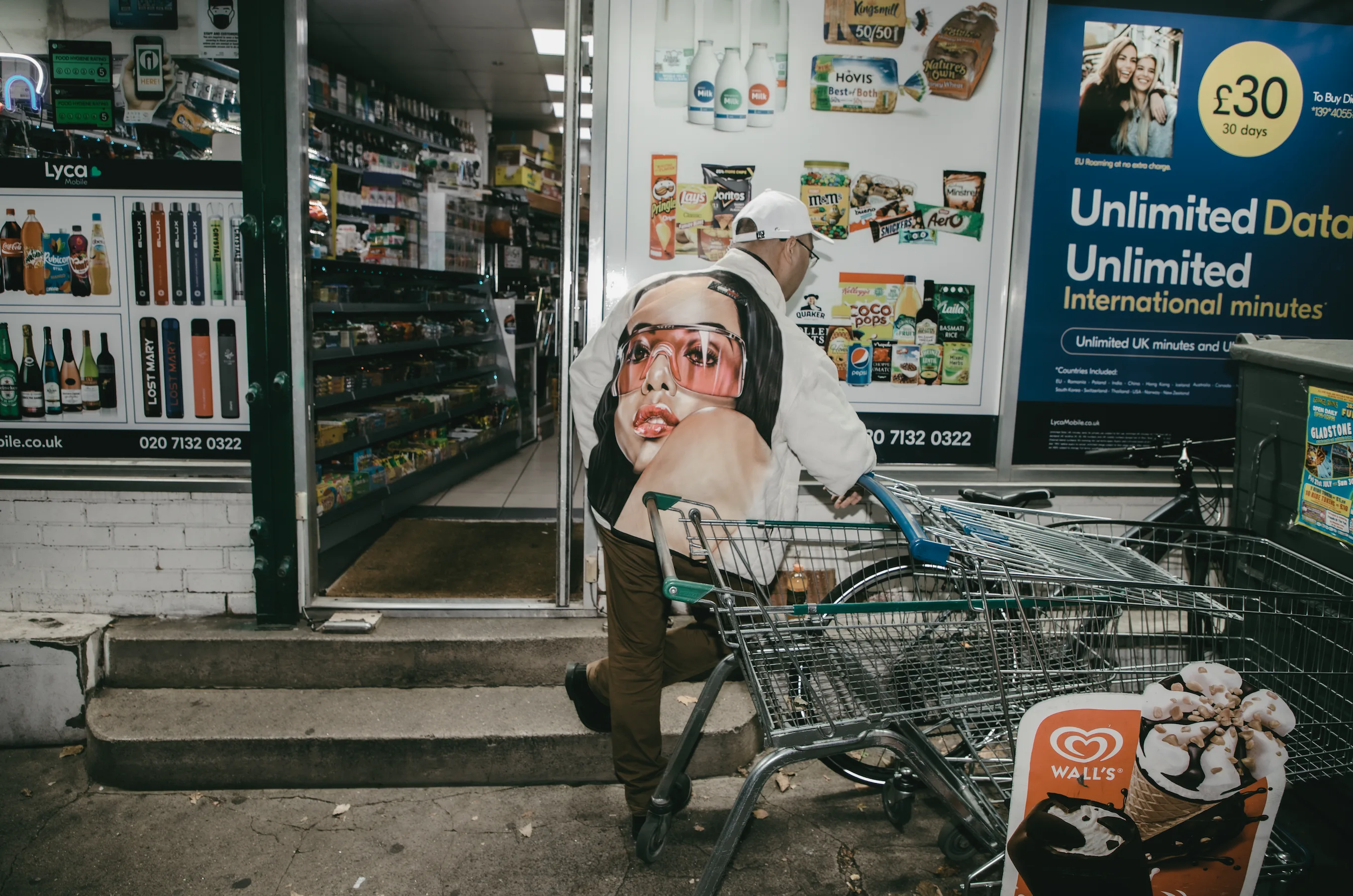
Jonny Tanna doesn’t want to be an art dealer. The founder and director of London’s Harlesden High Street is going back to his roots and doubling down on community art. “I don’t want to be on the hamster wheel”, says Tanna, who built his programming by thinking outside of the box. “Everyone is chasing the new artists, chasing these fairs, and chasing money. It takes the fun away. I started out with the idea that I want to have a fun little place where I can show art.” This year, he is coming full circle.
Although Harlesden High Street’s Frieze debut sold out its booth last autumn in minutes (it featured paintings by Hamed Maiye and Mattia Guarnera-MacCarthy), the gallery director has never been interested in sales. “I would be really tough with collectors”, he says, recalling past encounters with potential buyers who seemed to be more interested in the work’s value than the artist’s message. “I’ve said ‘Sorry, I can’t sell this to you. I like collectors who have proper relationships with my artists’”, he remembers.
Now Tanna is distancing himself from the traditional gallery structure that often caters to collectors and art-world insiders in favour of the public. He is looking to the programming of nonprofits and museums as a north star. After all, Tanna founded Harlesden High Street as a safe space for his community. During the pandemic, the gallery served as a meeting spot for a support group for domestic-violence survivors, held workshops for local students and collaborated with rehabilitation programmes for formerly incarcerated people.
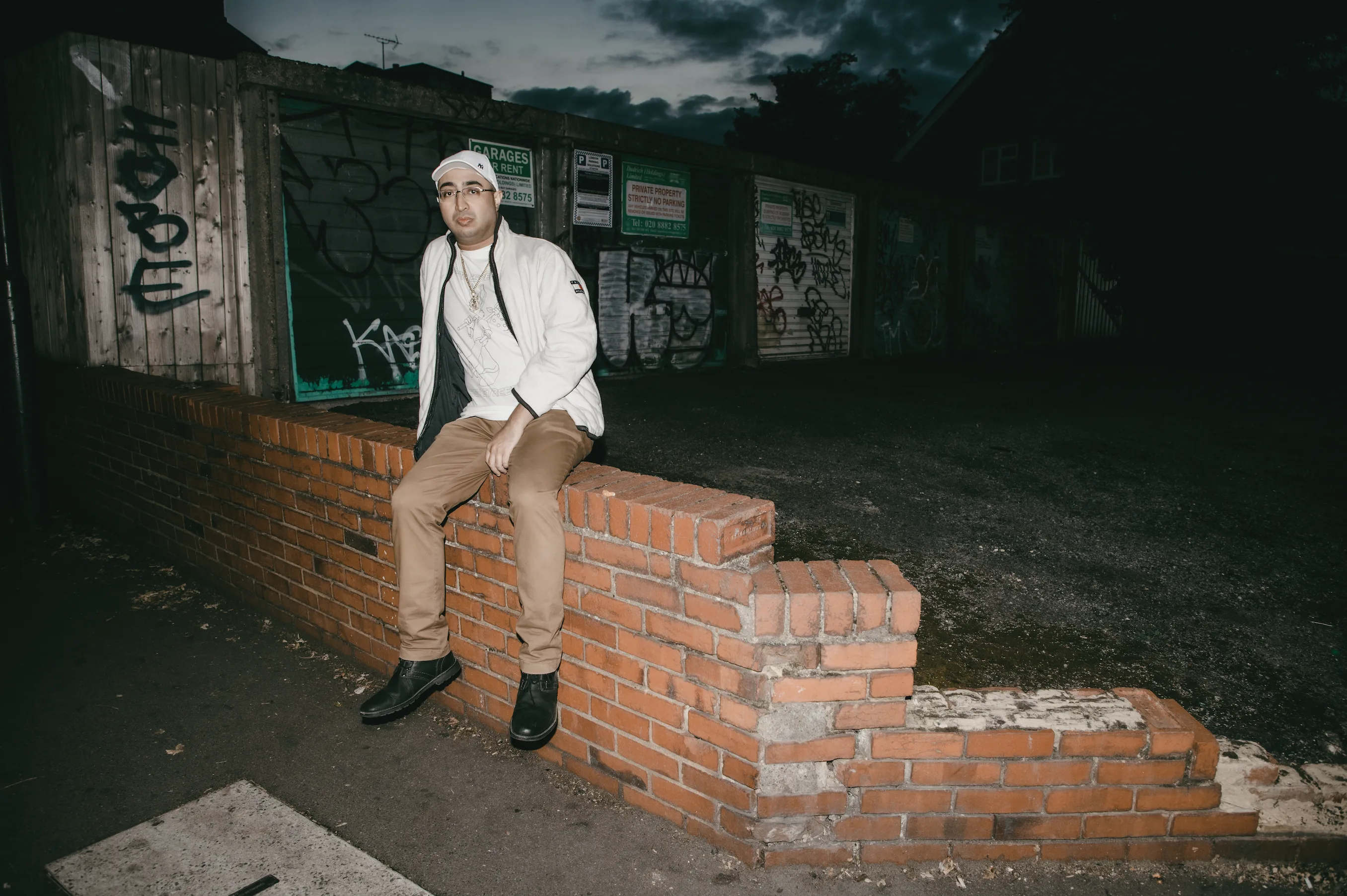
“If I’m going to be criticising the London art scene, then I need to be on the next level,” Tanna says. “I’ve never really been for the art world, anyway. Why not bring institutional shows to the neighbourhood where the people can see them for free?”
Tanna emphasises that community art doesn’t stop at curating exhibitions with the community in mind; it also means encouraging the community to show their own work. “Unlike most spaces that only work with artists who are already developed, have a market, and an art audience, we find outsiders and help them contextualise their work”, he says, crediting his colleagues Linda Mognato, gallery manager, and Brooke Wilson, programme director, for bringing this ethos to life.
Of course, he understands that some of his artists want to sell their works and have ambitions to enter the potentially lucrative market. In these cases, Tanna takes on the role of a de-facto curator-matchmaker, connecting artists with London galleries such as Copperfield Gallery, Maurine Paley and Cabinet. As for Harlesden High Street, “it’s not really a nonprofit; it’s not really a commercial space; it’s just a space”, he explains.
Tanna’s expansive idea of what a space can be overflows into the gallery’s programming. He often encourages his artists to push the boundaries between their work and where they are showing it. The result has been immersive environments in the form of a Long Beach liquor store, a taxi-cab office, a telemarketing call centre, Echo Park in the 1990s, a karaoke performance venue, a chapel, a supermarket, a living room and Harlesden itself.
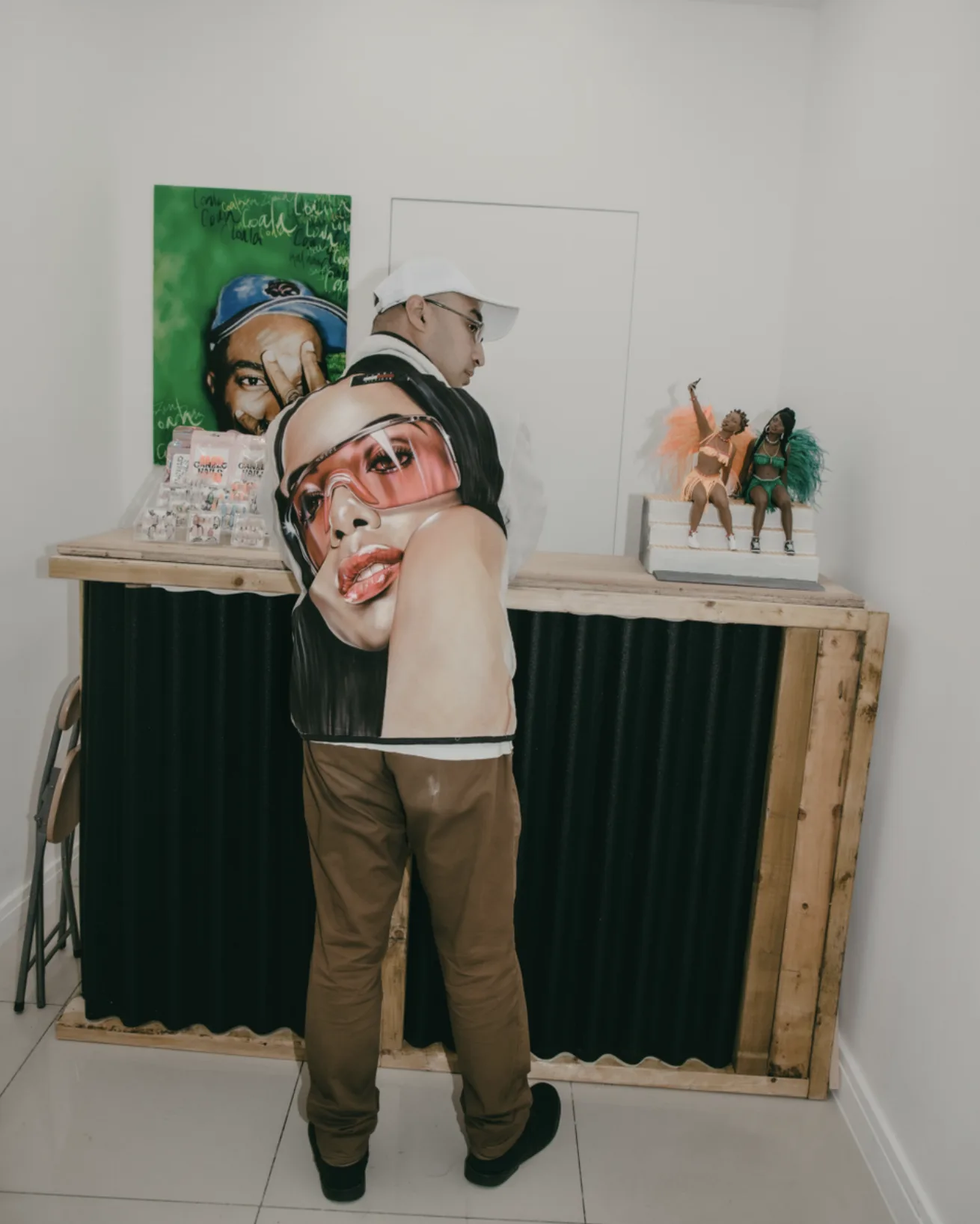
The gallery’s 2022 exhibition Dub Inna Babylon—inspired by its neighbour, Hawkeye Records Store, an iconic 46-year-old music venue-cum-bakery—recreated the record shop to pay homage to the music of the neighbourhood’s Afro-Caribbean diasporic communities. Another group exhibition the same year began as a series of site-specific interventions at Notting Hill Carnival and culminated with the installations displayed on the gallery walls, featuring work by rising stars Mattia Guarnera-MacCarthy and Alvaro Barrington, as well as Mandy El-Sayegh, who has been a mentor for Tanna since day one.
He has staged exhibitions in apartments and off-site at various municipal spaces, and for three years, he ran the only artist-run Black residency in London. “We had a gallery space on the ground floor and on the other floors, the artists could invite other artists to use the space for free”, he says. “Sadly, the artists just couldn’t get funding, and we couldn’t get any press for it.” Eventually, they lost the five-storey building to developers who wanted to turn it into apartments.
For Tanna, arts and activism are inextricable, and solidarity doesn’t end with an exhibition. Community support is at the heart of the gallery’s purpose. “Let’s use the space as a support centre, raise money to send aid and help, and donate to places that need it”, he says, adding that he hopes other art galleries will be inspired to do the same.
Tanna knows firsthand the positive impact art can have on a life. “In my case, culture was the way to heal”, he reflects. A years-long gambling addiction and lack of support for his personal film projects left him downtrodden and looking for a way out. Then in 2016, he found himself back on track, curating film screenings after his friend, the director Wade Jacks invited him to a film night in a pub on Portobello Road put on by “an old hippy from San Francisco”, Hank Targowski.
Tanna was impressed by Targowski’s obscure, experimental programming (like a Richard Linklater deep cut), and he offered to help spread the word to London’s younger art crowd. The pub eventually closed, and the film nights moved to a nearby contemporary gallery. The first screening attracted 1,500 people and turned into a series. “The director was like, ‘This show is not commercial at all, but it’s not gonna make money!’” Tanna recalls. “I said, ‘Yeah, that’s the point. I’m doing the opposite of what you guys do.’”
When Targowski passed away, the space felt empty, and Tanna moved on to a new gallery where he would host pop-up exhibitions as he continued to search for a space of his own. His quest led him to a six-month long stint filing paperwork for a property investor, who eventually helped him land his first permanent location in Central London in 2016.
Soon afterwards, he was riding the bus on the 30-minute drive from the gallery to his home in Harlesden where he grew up. Looking out of the window, he was asking himself “What are you going to do with yourself?”, when a storefront sign caught his eye: “Harlesden Discount Store”. Tanna hopped off the bus and bought the logo that adorns his storefront today.
Propelled by a desire to honour the gallery’s namesake, Tanna soon discovered the current location, next-door to his childhood bakery. “I’ve lived in Harlesden all my life, in fact in the same house”, he says. “It went really well in Central London, but it didn’t feel right. I was trying to find our goal, our direction, really.” Four years later, and it was time to bring the gallery home.
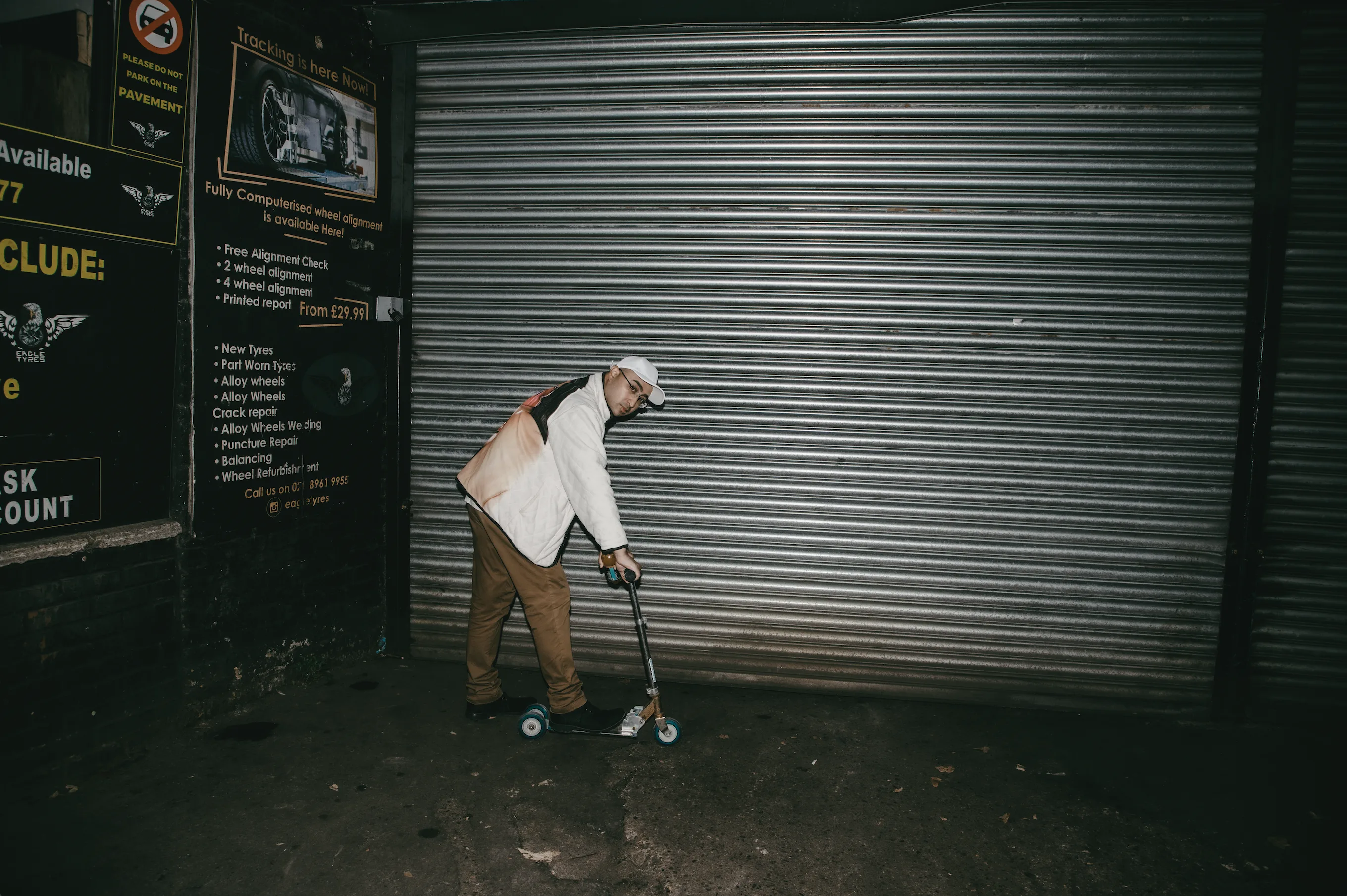
“It just made sense”, he remembers. “Harlesden is the last ungentrified neighbourhood in London. We were trying to connect with the local audience, with people from the working class and backgrounds that don’t have access to art”, he says. “There’s no art scene, no art schools, no art galleries. We’ve got the library. We’re literally the only gallery around here.”
Here, on the same street he walked down after school as a child, Tanna found his purpose: to make it accessible to his community, not just to visit but also to show work in the gallery. “When we were in Central London, we didn’t get a lot of people of colour coming”, he says. “People of colour, people from outside of the art world, are often scared to walk into galleries—even I still sometimes walk into a gallery and feel intimidated. I’m not gonna lie, I’ve still got that anxiety”, he observes. “Over here, everyone feels welcome. They just come in and hang out. It’s great. You know, it’s a social club, just like a barber shop.”
Since relocating to Harlesden in 2020, Tanna has discovered local artists spanning generations. He met Paulette Coke, a painter in her seventies, after the artist and her twin sister Pauline Coke visited the gallery with a large folder overflowing with 6 x 4 photographs of Paulette’s work. Paulette, Tanna learned, had taken up painting in her garden 28 years earlier after being diagnosed with bone cancer. “She asked me, ‘How much would I have to pay to exhibit in your space?’” he remembers. “I was like ‘No sweetheart, you don’t have to pay’”. Today, Coke is represented by the gallery.
‘I really want more people to be aware, not about us in particular, but about the artists that we’re working with”, Tanna says.
Words by Meka Boyle
